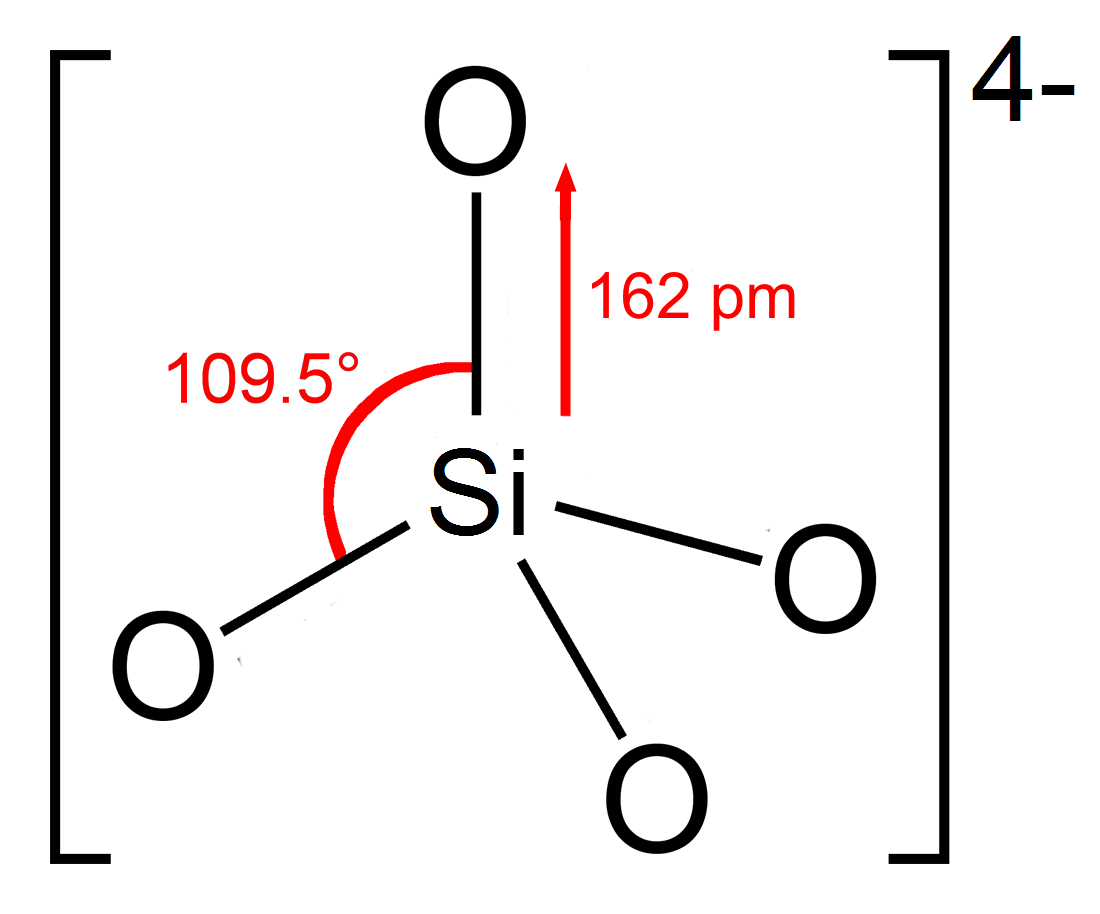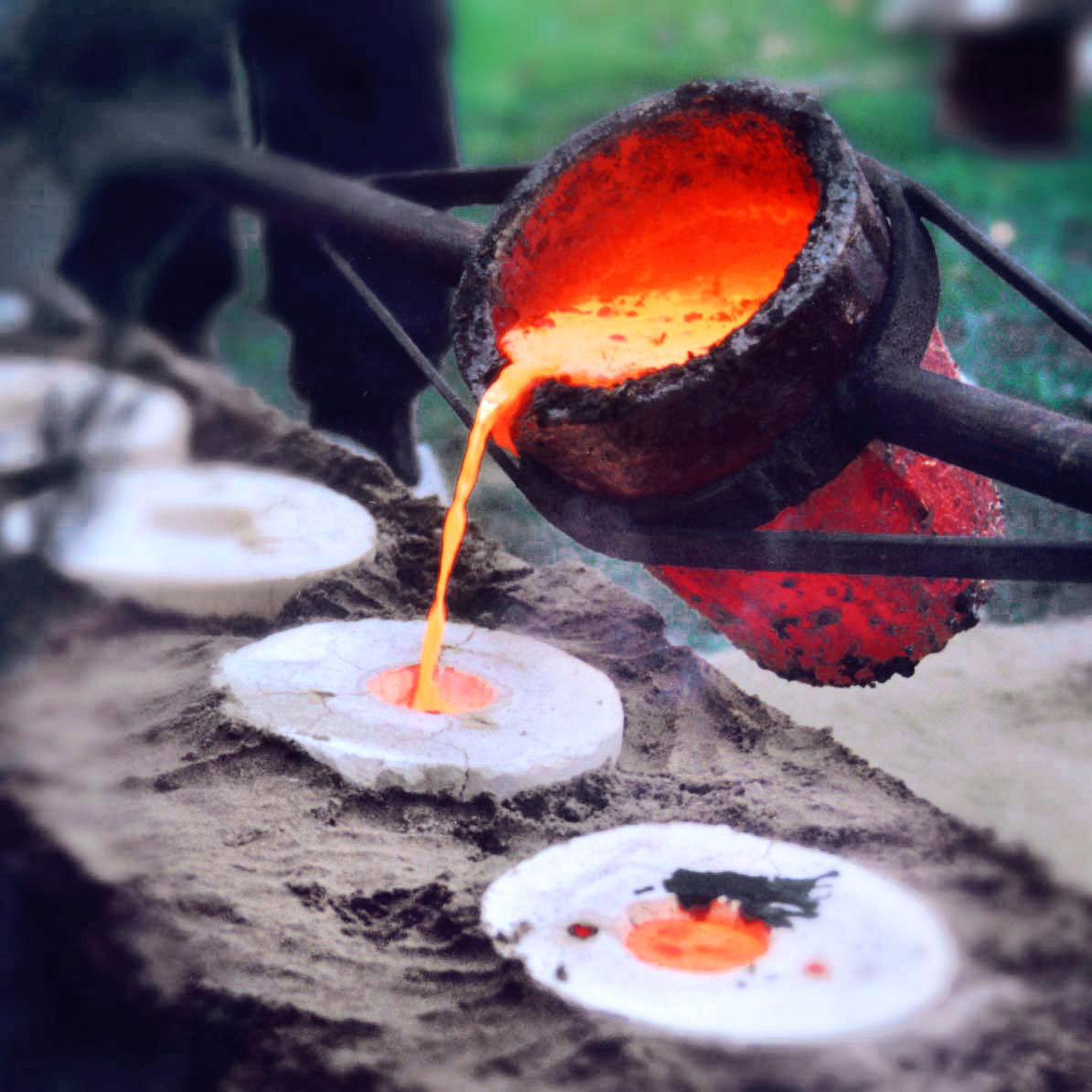|
Zirconium(IV) Silicate
Zirconium silicate, also zirconium orthosilicate, ZrSiO4, is a chemical compound, a silicate of zirconium. It occurs in nature as zircon, a silicate mineral. Powdered zirconium silicate is also known as zircon flour. Zirconium silicate is usually colorless, but impurities induce various colorations. It is insoluble in water, acids, alkali and aqua regia. Hardness is 7.5 on the Mohs scale. Structure and bonding Zircon consists of 8-coordinated Zr4+ centers linked to tetrahedral orthosilicate SiO44- sites. The oxygen atoms are all triply bridging, each with the environment OZr2Si. Given its highly crosslinked structure, the material is hard, and hence prized as gemstone and abrasive. Zr(IV) is a d0 ion. Consequently the material is colorless and diamagnetic. Production Zirconium silicate occurs in nature as mineral zircon. Concentrated sources of zircon are rare. It is mined from sand deposits and separated by gravity. Some sands contain a few percent of zircon. It can als ... [...More Info...] [...Related Items...] OR: [Wikipedia] [Google] [Baidu] |
Chemical Compound
A chemical compound is a chemical substance composed of many identical molecules (or molecular entities) containing atoms from more than one chemical element held together by chemical bonds. A molecule consisting of atoms of only one element is therefore not a compound. A compound can be transformed into a different substance by a chemical reaction, which may involve interactions with other substances. In this process, bonds between atoms may be broken or new bonds formed or both. There are four major types of compounds, distinguished by how the constituent atoms are bonded together. Molecular compounds are held together by covalent bonds; ionic compounds are held together by ionic bonds; intermetallic compounds are held together by metallic bonds; coordination complexes are held together by coordinate covalent bonds. Non-stoichiometric compounds form a disputed marginal case. A chemical formula specifies the number of atoms of each element in a compound molecule, usin ... [...More Info...] [...Related Items...] OR: [Wikipedia] [Google] [Baidu] |
Grinding (abrasive Cutting)
Grinding is a type of abrasive machining process which uses a grinding wheel as cutting tool. A wide variety of machines are used for grinding, best classified as portable or stationary: * Portable power tools such as angle grinders, die grinders and cut-off saws * Stationary power tools such as bench grinders and cut-off saws * Stationary hydro- or hand-powered sharpening stones Milling practice is a large and diverse area of manufacturing and toolmaking. It can produce very fine finishes and very accurate dimensions; yet in mass production contexts, it can also rough out large volumes of metal quite rapidly. It is usually better suited to the machining of very hard materials than is "regular" machining (that is, cutting larger chips with cutting tools such as tool bits or milling cutters), and until recent decades it was the only practical way to machine such materials as hardened steels. Compared to "regular" machining, it is usually better suited to taking very ... [...More Info...] [...Related Items...] OR: [Wikipedia] [Google] [Baidu] |
Zirconium(IV) Compounds
Zirconium is a chemical element; it has symbol Zr and atomic number 40. First identified in 1789, isolated in impure form in 1824, and manufactured at scale by 1925, pure zirconium is a lustrous transition metal with a greyish-white color that closely resembles hafnium and, to a lesser extent, titanium. It is solid at room temperature, ductile, malleable and corrosion-resistant. The name ''zirconium'' is derived from the name of the mineral zircon, the most important source of zirconium. The word is related to Persian '' zargun'' (zircon; ''zar-gun'', "gold-like" or "as gold"). Besides zircon, zirconium occurs in over 140 other minerals, including baddeleyite and eudialyte; most zirconium is produced as a byproduct of minerals mined for titanium and tin. Zirconium forms a variety of inorganic compounds, such as zirconium dioxide, and organometallic compounds, such as zirconocene dichloride. Five isotopes occur naturally, four of which are stable. The metal and its alloys are main ... [...More Info...] [...Related Items...] OR: [Wikipedia] [Google] [Baidu] |
Silicates
A silicate is any member of a family of polyatomic anions consisting of silicon and oxygen, usually with the general formula , where . The family includes orthosilicate (), metasilicate (), and pyrosilicate (, ). The name is also used for any salt (chemistry), salt of such anions, such as sodium metasilicate; or any ester containing the corresponding Moiety (chemistry), chemical group, such as tetramethyl orthosilicate. The name "silicate" is sometimes extended to any anions containing silicon, even if they do not fit the general formula or contain other atoms besides oxygen; such as hexafluorosilicic acid, hexafluorosilicate . Most commonly, silicates are encountered as silicate minerals. For diverse manufacturing, technological, and artistic needs, silicates are versatile materials, both natural (such as granite, gravel, and garnet) and artificial (such as Portland cement, ceramics, glass, and waterglass). Structural principles In most silicates, a silicon atom occupies th ... [...More Info...] [...Related Items...] OR: [Wikipedia] [Google] [Baidu] |
Granuloma
A granuloma is an aggregation of macrophages (along with other cells) that forms in response to chronic inflammation. This occurs when the immune system attempts to isolate foreign substances that it is otherwise unable to eliminate. Such substances include infectious organisms including bacteria and fungi, as well as other materials such as foreign objects, keratin, and suture fragments. Definition In pathology, a granuloma is an organized collection of macrophages. In medical practice, doctors occasionally use the term ''granuloma'' in its more literal meaning: "a small nodule". Since a small nodule can represent any tissue from a harmless nevus to a malignant tumor, this use of the term is not very specific. Examples of this use of the term ''granuloma'' are the lesions known as vocal cord granuloma (known as contact granuloma), pyogenic granuloma, and intubation granuloma, all of which are examples of granulation tissue, not granulomas. "Pulmonary hyalinizing ... [...More Info...] [...Related Items...] OR: [Wikipedia] [Google] [Baidu] |
Neutron
The neutron is a subatomic particle, symbol or , that has no electric charge, and a mass slightly greater than that of a proton. The Discovery of the neutron, neutron was discovered by James Chadwick in 1932, leading to the discovery of nuclear fission in 1938, the first self-sustaining nuclear reactor (Chicago Pile-1, 1942) and the first nuclear weapon (Trinity (nuclear test), Trinity, 1945). Neutrons are found, together with a similar number of protons in the atomic nucleus, nuclei of atoms. Atoms of a chemical element that differ only in neutron number are called isotopes. Free neutrons are produced copiously in nuclear fission and nuclear fusion, fusion. They are a primary contributor to the nucleosynthesis of chemical elements within stars through fission, fusion, and neutron capture processes. Neutron stars, formed from massive collapsing stars, consist of neutrons at the density of atomic nuclei but a total mass more than the Sun. Neutron properties and interactions ar ... [...More Info...] [...Related Items...] OR: [Wikipedia] [Google] [Baidu] |
Nuclear Reactors
A nuclear reactor is a device used to initiate and control a fission nuclear chain reaction. They are used for commercial electricity, marine propulsion, weapons production and research. Fissile nuclei (primarily uranium-235 or plutonium-239) absorb single neutrons and split, releasing energy and multiple neutrons, which can induce further fission. Reactors stabilize this, regulating neutron absorbers and moderators in the core. Fuel efficiency is exceptionally high; low-enriched uranium is 120,000 times more energy dense than coal. Heat from nuclear fission is passed to a working fluid coolant. In commercial reactors, this drives turbines and electrical generator shafts. Some reactors are used for district heating, and isotope production for medical and industrial use. Following the 1938 discovery of fission, many countries initiated military nuclear research programs. Early subcritical experiments probed neutronics. In 1942, the first artificial critical nu ... [...More Info...] [...Related Items...] OR: [Wikipedia] [Google] [Baidu] |
Molding Sand
Molding sand, also known as foundry sand, is a sand that when moistened and compressed or oiled or heated tends to pack well and hold its shape. It is used in the process of sand casting for preparing the mold cavity. Green sand Green sand is an aggregate of sand, bentonite clay, pulverized coal and water. Its principal use is in making molds for metal casting. The largest portion of the aggregate is a sand, usually silica or sometimes olivine. There are many recipes for the proportion of clay, but they all strike different balances between moldability, surface finish, and ability of the hot molten metal to degas. The coal, typically referred to in as sea-coal, which is present at a ratio of less than 5%, partially combusts in the surface of the molten metal, leading to the offgassing of organic vapors. Sand casting is one of the earliest forms of casting practiced due to the simplicity of materials involved. It still remains one of the cheapest ways to cast metal because ... [...More Info...] [...Related Items...] OR: [Wikipedia] [Google] [Baidu] |
Ions
An ion () is an atom or molecule with a net electrical charge. The charge of an electron is considered to be negative by convention and this charge is equal and opposite to the charge of a proton, which is considered to be positive by convention. The net charge of an ion is not zero because its total number of electrons is unequal to its total number of protons. A cation is a positively charged ion with fewer electrons than protons (e.g. K+ (potassium ion)) while an anion is a negatively charged ion with more electrons than protons (e.g. Cl− (chloride ion) and OH− (hydroxide ion)). Opposite electric charges are pulled towards one another by electrostatic force, so cations and anions attract each other and readily form ionic compounds. Ions consisting of only a single atom are termed ''monatomic ions'', ''atomic ions'' or ''simple ions'', while ions consisting of two or more atoms are termed polyatomic ions or ''molecular ions''. If only a + or − is present, it indicates ... [...More Info...] [...Related Items...] OR: [Wikipedia] [Google] [Baidu] |
ZS-9
Sodium zirconium cyclosilicate, sold under the brand name Lokelma, is a medication used to treat high blood potassium. Onset of effects occurs in one to six hours. It is taken by mouth. Common side effects include swelling and low blood potassium. Use is likely safe in pregnancy and breastfeeding. It works by binding potassium ions in the gastrointestinal tract which is then lost in the stool. Sodium zirconium cyclosilicate was approved for medical use in the European Union and in the United States in 2018. It was developed by AstraZeneca. Medical use Sodium zirconium cyclosilicate is used to treat high blood potassium. Onset of effects occurs in one to six hours. Mechanism of action ZS-9 is a zirconium silicate. Zirconium silicates have been extensively used in medical applications because of their proven safety. 11 zirconium silicates were screened by an iterative optimization process. ZS-9 selectively captures potassium ions, presumably by mimicking the action ... [...More Info...] [...Related Items...] OR: [Wikipedia] [Google] [Baidu] |
MOCVD
Metalorganic vapour-phase epitaxy (MOVPE), also known as organometallic vapour-phase epitaxy (OMVPE) or metalorganic chemical vapour deposition (MOCVD), is a chemical vapour deposition method used to produce single- or polycrystalline thin films. It is a process for growing crystalline layers to create complex semiconductor multilayer structures. In contrast to molecular-beam epitaxy (MBE), the growth of crystals is by chemical reaction and not physical deposition. This takes place not in vacuum, but from the gas phase at moderate pressures (10 to 760 Torr). As such, this technique is preferred for the formation of devices incorporating thermodynamically metastable alloys, and it has become a major process in the manufacture of optoelectronics, such as light-emitting diodes, its most widespread application. It was first demonstrated in 1967 at North American Aviation (later Rockwell International) Autonetics Division in Anaheim CA by Harold M. Manasevit. Basic principle ... [...More Info...] [...Related Items...] OR: [Wikipedia] [Google] [Baidu] |



